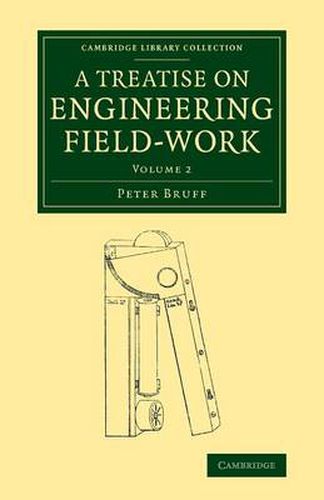Readings Newsletter
Become a Readings Member to make your shopping experience even easier.
Sign in or sign up for free!
You’re not far away from qualifying for FREE standard shipping within Australia
You’ve qualified for FREE standard shipping within Australia
The cart is loading…






In the 1840s, the civil engineer Peter Bruff (1812-1900) designed what was then the largest brick structure in Britain, the 1,000-foot-long Chappel Viaduct in Essex. He went on to become a railway entrepreneur and developer, and was responsible for the creation of the resort town Clacton-on-Sea, where he also designed many of the buildings. In this illustrated guide, first published in 1838 and here reissued in the revised and expanded two-volume second edition of 1840-2, he discusses the theory and practice of surveying (calculating the accurate position of points in the landscape) and levelling (calculating the accurate height of points). Volume 2 covers levelling; Bruff gives a brief overview of the theory, then describes the typical equipment used. By discussing such examples as the levelling of a projected railway route, he explains what information should be recorded, and how to avoid common errors of technique that affect accuracy.
$9.00 standard shipping within Australia
FREE standard shipping within Australia for orders over $100.00
Express & International shipping calculated at checkout
In the 1840s, the civil engineer Peter Bruff (1812-1900) designed what was then the largest brick structure in Britain, the 1,000-foot-long Chappel Viaduct in Essex. He went on to become a railway entrepreneur and developer, and was responsible for the creation of the resort town Clacton-on-Sea, where he also designed many of the buildings. In this illustrated guide, first published in 1838 and here reissued in the revised and expanded two-volume second edition of 1840-2, he discusses the theory and practice of surveying (calculating the accurate position of points in the landscape) and levelling (calculating the accurate height of points). Volume 2 covers levelling; Bruff gives a brief overview of the theory, then describes the typical equipment used. By discussing such examples as the levelling of a projected railway route, he explains what information should be recorded, and how to avoid common errors of technique that affect accuracy.